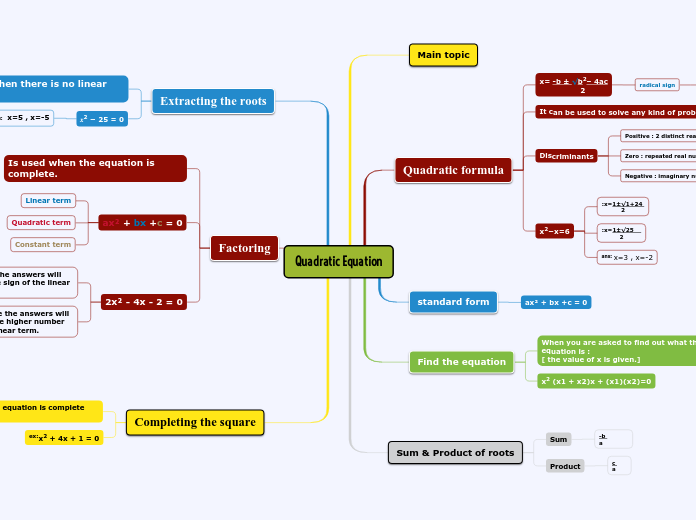
x= -b ± √b2– 4ac
2
radical sign
The answer under the under the radical sign is the discriminant.
It can be used to solve any kind of problem.
Discriminants
Positive : 2 distinct real numbers.
Zero : repeated real numbers
Negative : imaginary number
x2−x=6
:x=1±√1+24 2
:x=1±√25 2
ans: x=3 , x=-2
ax² + bx +c = 0
When you are asked to find out what the equation is :
[ the value of x is given.]
x2 (x1 + x2)x + (x1)(x2)=0
Sum
-b a
Product
c a
Is used when there is no linear term.
𝑥2 − 25 = 0
ans: x=5 , x=-5
Is used when the equation is complete.
ax² + bx +c = 0
Linear term
Quadratic term
Constant term
2x² - 4x - 2 = 0
If the constant is positive the answers will use the same signs and the sign of the linear term will be followed.
If the constant is negative the answers will use different signs and the higher number will use the sign of the linear term.
It is used when the equation is complete but not factorable.
ex:x2 + 4x + 1 = 0